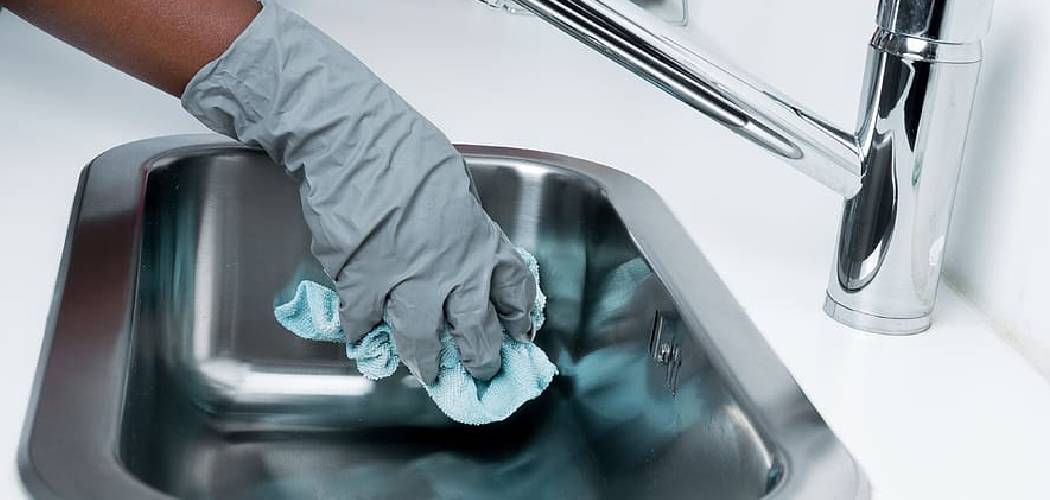Over time, faucet heads can accumulate mineral deposits, dirt, and grime, which may affect water flow and hygiene. Cleaning your faucet head regularly is essential to maintaining its functionality and ensuring a clean water supply. One of the easiest and most effective ways to clean your faucet head is by using vinegar, a natural and inexpensive solution that helps dissolve buildup without the use of harsh chemicals.
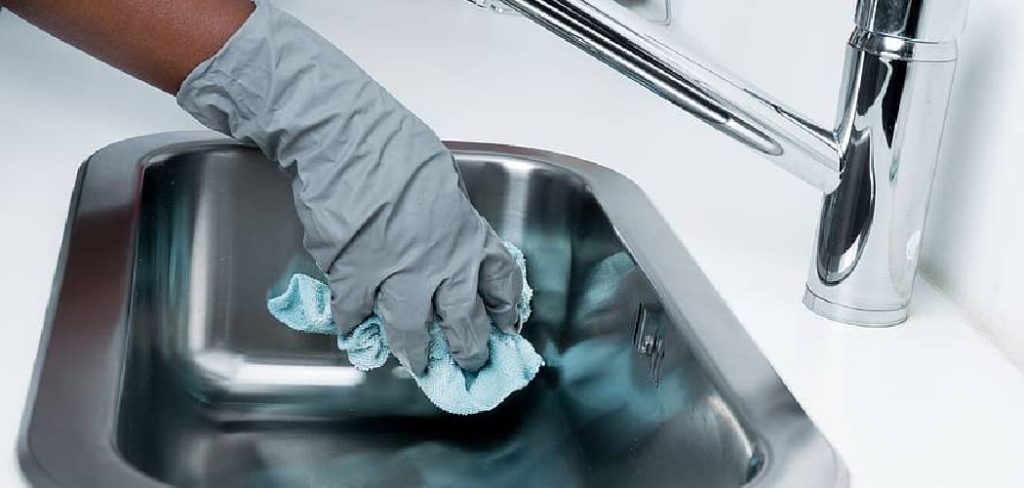
In this article on how to clean faucet head with vinegar, we will discuss the step-by-step process of cleaning different types of faucet heads and some tips for maintenance.
Why Use Vinegar to Clean Your Faucet Head?
Vinegar is an excellent cleaning agent due to its natural acidity, which effectively breaks down mineral deposits, limescale, and grime that can accumulate on your faucet head over time. Unlike harsh chemical cleaners, vinegar is nontoxic, environmentally friendly, and safe to use in households, making it a popular choice for cleaning tasks.
Additionally, it is widely available and inexpensive, making it an accessible solution for most people. Using vinegar not only restores your faucet head’s performance by improving water flow but also ensures that your water remains free of contaminants caused by buildup. This simple, natural method is both efficient and gentle, helping to prolong the life and functionality of your faucet head.
Needed Materials
White Vinegar:
White vinegar is an essential ingredient for cleaning your faucet head. It is a clear, colorless liquid made from distilled grain alcohol and diluted with water to create a 5% acetic acid solution. This acidity helps break down mineral deposits and grime on the surface of your faucet head, leaving it clean and shiny.
Small Plastic Bag:
To soak your faucet head in vinegar, you will need a small plastic bag that can be tightly secured around the faucet head. A sandwich or freezer bag works well for this purpose.
Rubber Band:
A rubber band will come in handy when securing the plastic bag around the faucet head. Make sure to choose one that is large enough to fit around both the faucet head and the bag.
Paper Towels:
After soaking your faucet head in vinegar, you will need some paper towels to dry it off. This will help remove any remaining mineral deposits or grime that may still be on the surface.
Toothbrush:
A toothbrush can be used to scrub tougher stains or hard-to-reach areas on your faucet head. Make sure to use a soft-bristled toothbrush to avoid scratching the surface of your faucet head.
Baking Soda:
Baking soda can also be combined with vinegar for an extra powerful cleaning solution. Mix equal parts baking soda and vinegar together to create a paste, then use it to scrub your faucet head. The combination of these two ingredients will help to remove any tough stains or buildup on the surface.
Lemon Juice:
Lemon juice is a natural acid that can effectively dissolve mineral deposits and grime. Squeeze lemon juice directly onto your faucet head and let it sit for a few minutes before scrubbing it with a toothbrush. The acidic properties of lemon juice will help to break down any stubborn buildup and leave your faucet sparkling clean.
6 Steps on How to Clean Faucet Head With Vinegar
Step 1: Prepare the Vinegar Solution
Start by preparing a vinegar solution to clean your faucet head. Mix equal parts of white vinegar and warm water in a small bowl or container.
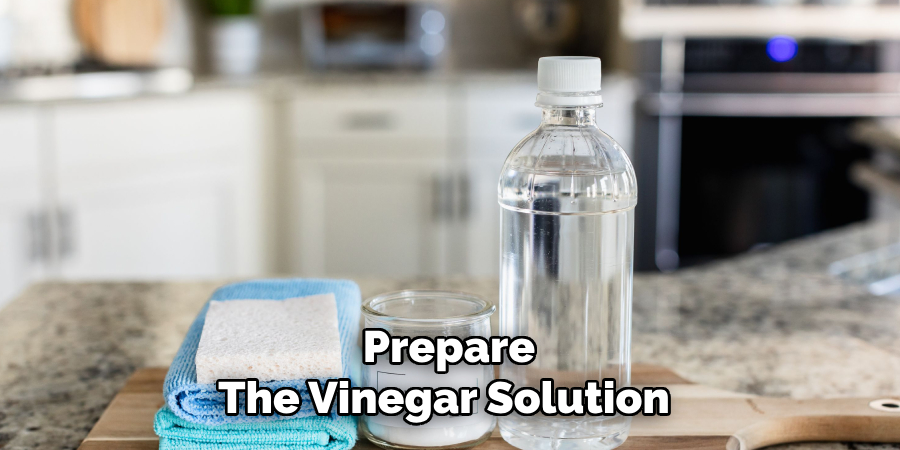
This solution will act as a natural cleaner to dissolve mineral deposits and grime effectively. Ensure the container is large enough to fully submerge the faucet head, if necessary.
Step 2: Detach the Faucet Head
Carefully detach the faucet head from the faucet. Most faucet heads can be unscrewed by turning them counterclockwise.
If it feels stuck or tight, you can use a soft cloth or rubber grip to get a better hold and avoid scratching the surface. Make sure to keep any small parts, like washers or O-rings, in a safe place so they can be reassembled later.
Step 3: Soak in Vinegar Solution
Fill the container with a mixture of equal parts white vinegar and warm water. Submerge the detached faucet head completely in the solution, ensuring that all areas with potential buildup are covered. Allow it to soak for at least 30 minutes to loosen any mineral deposits or grime.
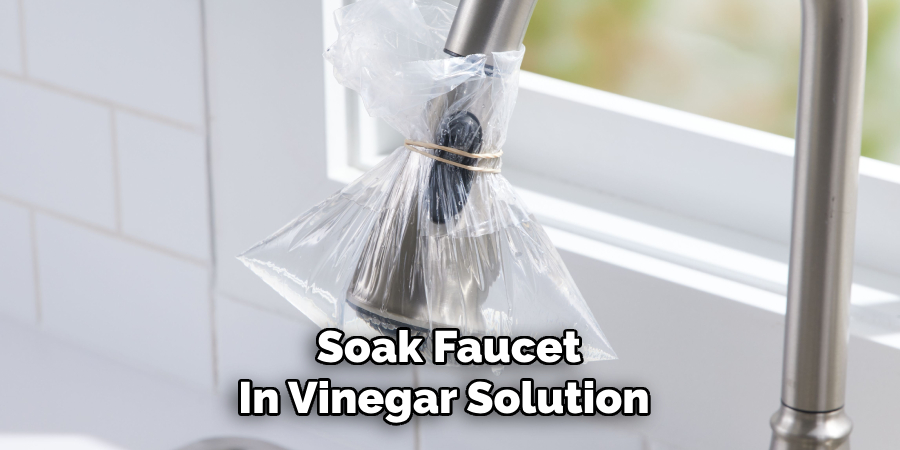
For tougher buildup, you can leave the faucet head soaking for up to an hour. The acidity of the vinegar will effectively break down the deposits without damaging the material.
Step 4: Scrub with Toothbrush
Using an old toothbrush, gently scrub the faucet head to remove any loosened debris or mineral deposits. Pay special attention to the nozzles and small crevices where buildup tends to accumulate.
Use a circular motion to effectively dislodge stubborn grime, and rinse the toothbrush frequently to ensure thorough cleaning. If necessary, dip the toothbrush into the vinegar solution for additional cleaning power. Once satisfied, rinse the faucet head thoroughly under running water to remove any remaining residue.
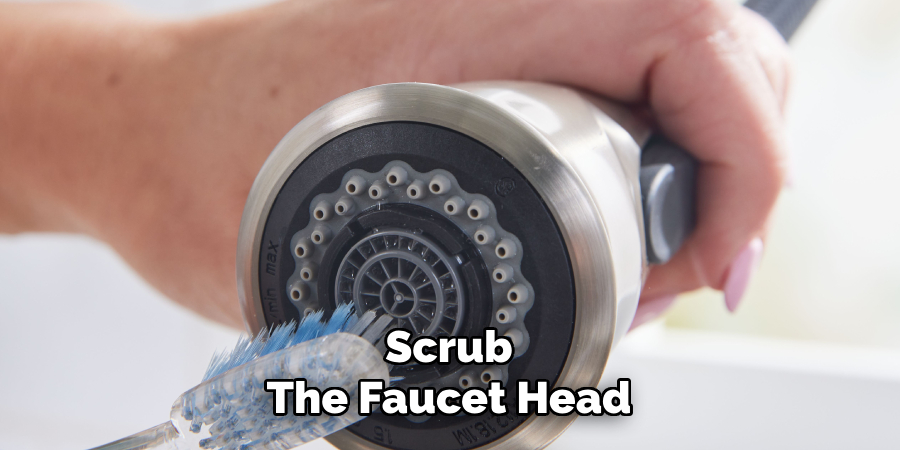
Step 5: Rinse and Dry
After thoroughly cleaning the faucet head, hold it under running water to rinse away any leftover vinegar solution, debris, or loosened grime. Ensure that all cleaning residue is completely removed. Once rinsed, use a clean, dry cloth to wipe the faucet head, paying attention to any small crevices or nozzles to prevent water spots.
For a polished finish, buff the faucet head with a soft microfiber cloth, leaving it shiny and ready for use.
Step 6: Clean Chrome or Stainless Steel Faucets
If you have a chrome or stainless steel faucet, you may notice water spots and fingerprints on the surface. To remove these, mix equal parts white vinegar and water in a spray bottle and spritz it onto the faucet. Let it sit for a few minutes before wiping it off with a clean cloth.
Following these steps on how to clean faucet head with vinegar can help keep your faucet sparkling and free of bacteria. Regularly cleaning your faucet head will not only improve the appearance of your sink but also ensure that the water coming out is clean and safe for use.
Additional Tips for Cleaning Faucet Heads
- For tougher buildup or grime, you can mix equal parts of baking soda and vinegar to create a paste. Apply this paste to the faucet head and let it sit for 15 minutes before scrubbing and rinsing.
- You can also use a commercial cleaner specifically designed for faucet heads. Just make sure to follow the instructions carefully and wear protective gloves if necessary.
- If your faucet head is detachable, remove it and soak it in a mixture of warm water and dish soap for an hour before scrubbing and rinsing thoroughly.
- To prevent future buildup, you can use a toothbrush or small wire brush to clean the aerator screen every few months.
- For hard water buildup, you can soak the faucet head in a solution of equal parts vinegar and water for an hour before scrubbing and rinsing.
- Don’t forget to clean the base of your faucet, as dirt and grime can collect there as well. Use a non-abrasive cleaner and a soft cloth or sponge for this task.
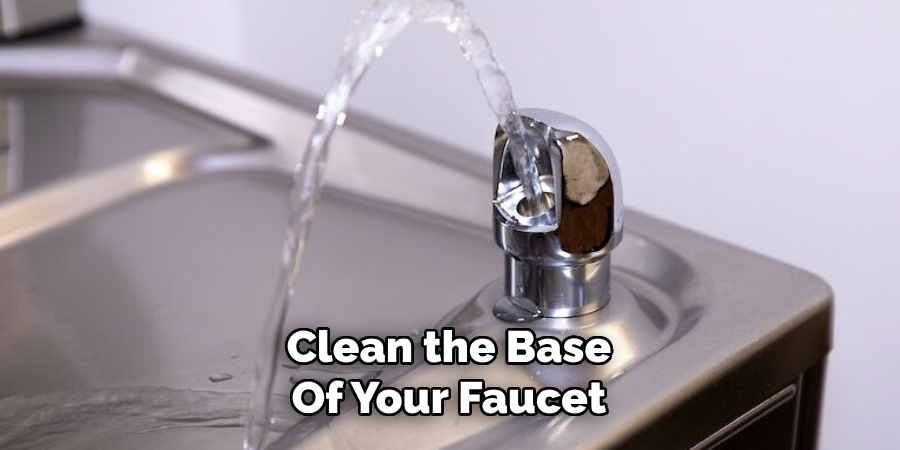
- If your faucet is still not functioning properly after cleaning, it may be time to replace it. Look for faucets with easy-to-clean features, such as removable aerators or anti-limescale technology.
- Regularly cleaning your faucet will not only keep it looking shiny and new but will also help prevent the buildup of harmful bacteria. For best results, clean your faucet at least once a week.
- Proper maintenance and cleaning of your faucet can also extend its lifespan, saving you money in the long run. So, take a few minutes each week to clean and maintain your faucet for optimal performance and longevity.
Frequently Asked Questions
Q: How Often Should I Clean My Faucet?
A: We recommend cleaning your faucet at least once a week to prevent the buildup of bacteria and maintain its appearance. However, if you notice any visible dirt or grime on a daily basis, it’s a good idea to clean your faucet more frequently.
Q: What Products Should I Use to Clean My Faucet?
A: It’s best to use mild soap and warm water to clean your faucet every day. For tougher stains or mineral deposits, you can use a mixture of equal parts white vinegar and water. Be sure to rinse the faucet thoroughly after using any cleaning products.
Q: Can I Use Abrasive Cleaners on My Faucet?
A: No, abrasive cleaners should not be used on your faucet as they can scratch and damage the surface. Stick to mild cleaners and non-abrasive sponges or cloths for cleaning.
Conclusion
In conclusion, keeping your kitchen faucet clean is essential for both hygiene and functionality purposes. Regularly cleaning and maintaining your faucet will not only keep it looking shiny and new but will also prevent the buildup of harmful bacteria and prolong its lifespan.
With just a few simple steps on how to clean faucet head with vinegar, you can ensure that your kitchen sink remains a clean and functional space for all your daily tasks. So, make sure to incorporate faucet cleaning into your regular kitchen cleaning routine and enjoy a clean and germ-free environment in your home.

